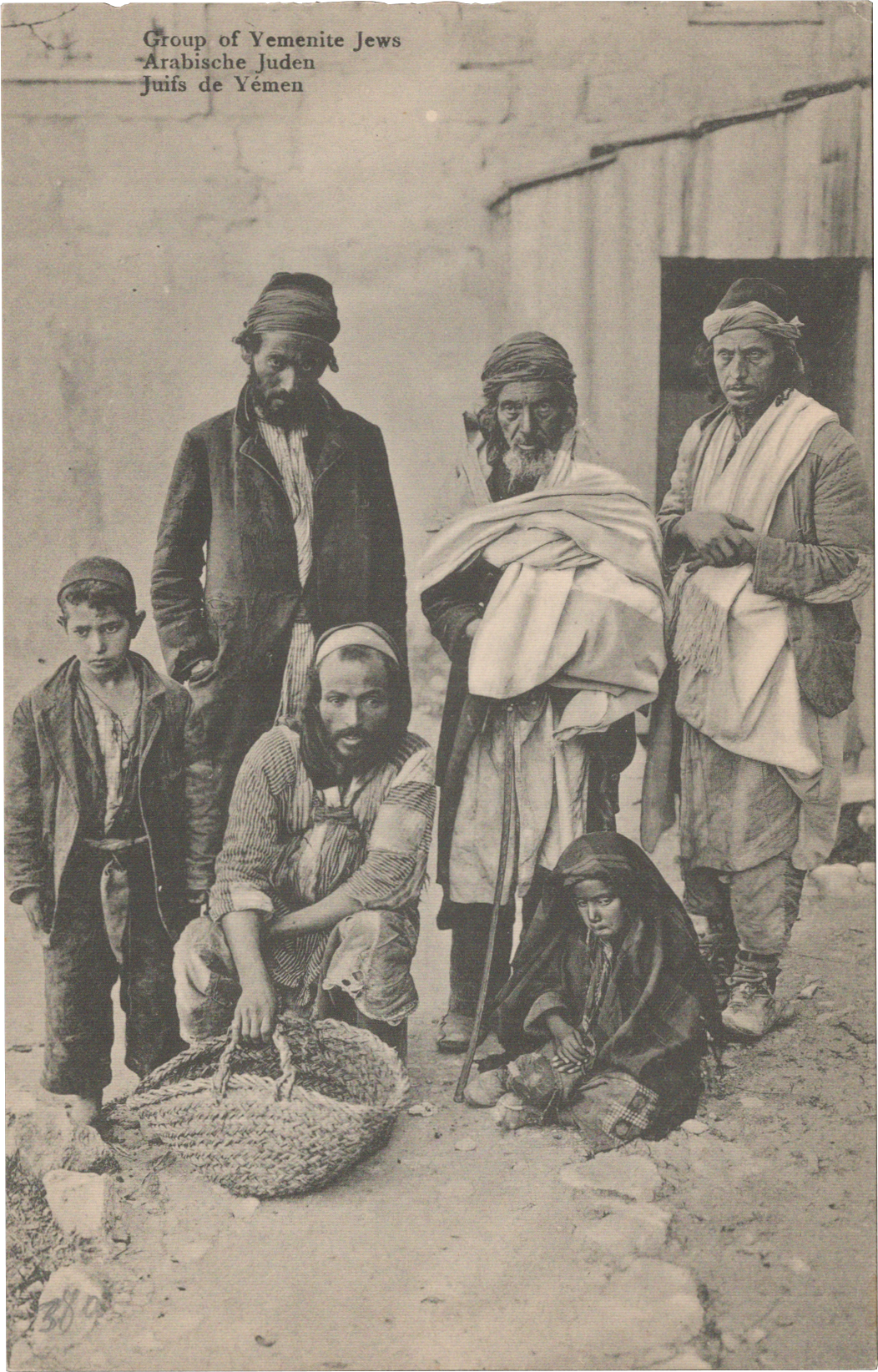Group of Yemenite Jews
We hope you are enjoying the presented images and words. Please help us run this page by buying one of our books.
While Yemenite Jews had always maintained relations to Jerusalem and some settled in the city at various points in time, their modern history in the Yishuv begins in 1881. Beginning in August of that year, roughly 200 Yemenite Jews in total began arriving in Jerusalem, motivated in large part by the desire for a better life—in their desperately poor home country they were by far the poorest part of the population—but, in some instances, also by Messianic premonitions. The Jews of the Old Yishuv eyed the new arrivals with considerable distrust and went out of its way to make life difficult for them. By 1908, Jerusalem was home to some 2,500 Yemenite Jews, by the end of the First World War, roughly 4,500 of them lived in the Yishuv. In the interwar period, a time of repressive anti-Jewish policies in Yemen, an estimated 15,000 Jews left the country illegally to settle in the Yishuv, and on the eve of the Second World War some 28,000 of them lived in the Yishuv. The remaining Jewish population was resettled in Israel between 1948 and 1951. It is assumed that no more than 200 Jews at best still lived in Yemen.
In contrast to the Old Yishuv, Christian pre-millenarians were very excited when the immigration of Yemenite Jews to Jerusalem began, assuming that they were “Gadites”, i.e., descendants of the tribe of Gad, and that their arrival signalled the beginning of the ingathering of the ten lost tribes of Israel they expected would occur on the eve of the Second Coming of Christ. Among these Christian groups was the American Colony, a pre-millenarian and proto-Zionist sect established in Jerusalem in 1881 by Horatio and Anna Spafford. So convinced were they of the imminence of the Second Coming that they not only went to the Mount of Olives every day with tea to welcome Christ but initially maintained a policy of celibacy. It was abandoned in 1904, when the Spaffords’ daughter, Bertha Vester-Spafford married Frederick Vester, the son of Ferdinand Vester, a German missionary who had established a business selling any number of local products, antiquities and curiosities. Under Frederick Vester it became the American Colony Store and served as the sole distributor of the American Colony’s photographic products. They were one of the sect’s principal sources of income. Vester himself was not one of the photographers, however. There were several postcards with this particular motif in circulation, including a colourized version.
Edition Fr. [Frederick] Vester & Co., ca. 1910.

